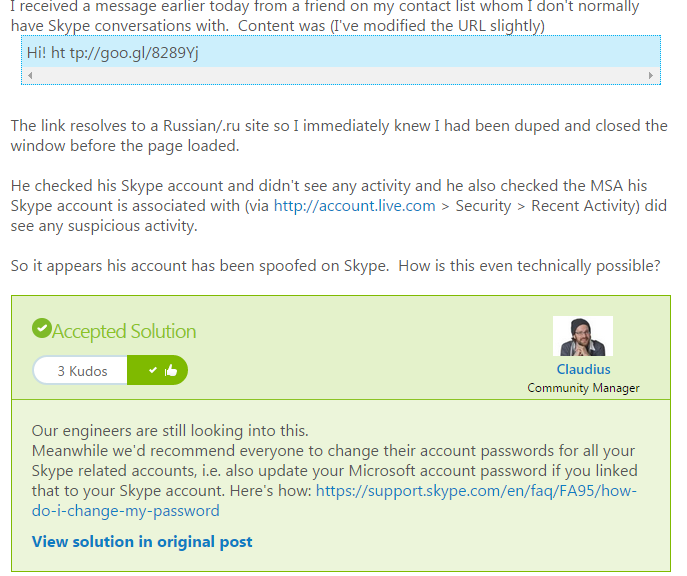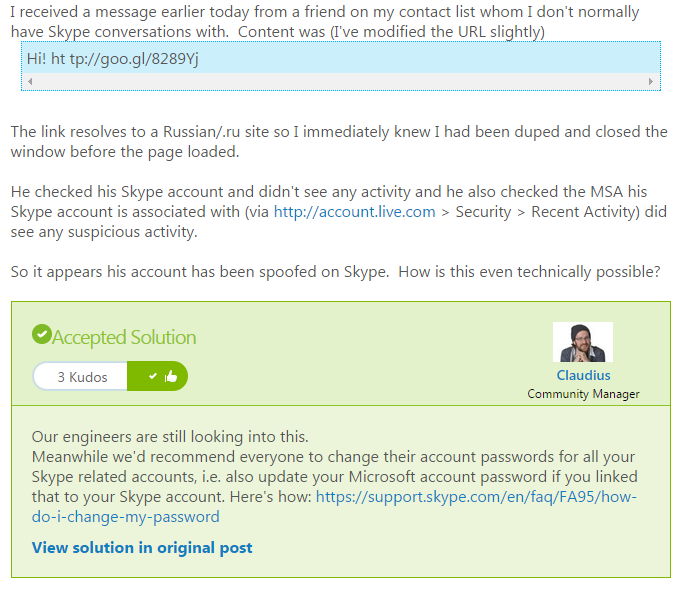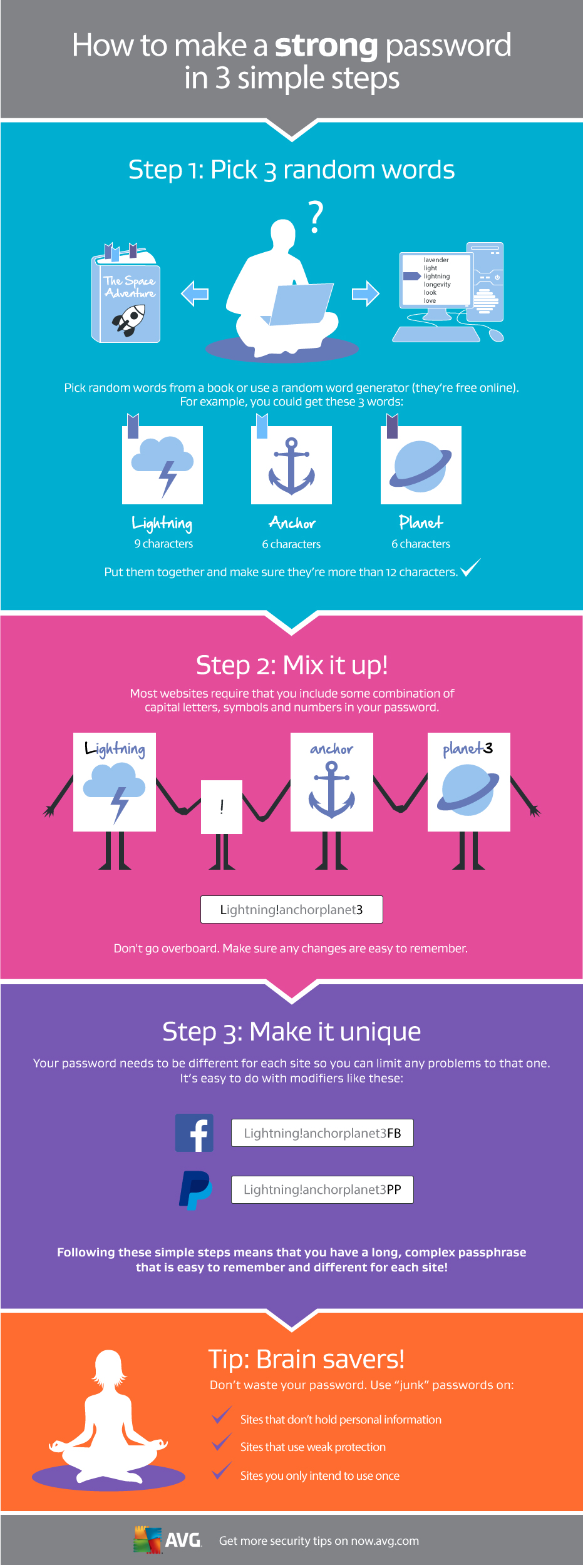If you think that you or someone you know has been a victim of spoofing, here are three things that you should you do.
Don’t click
Normally, spoofing or phishing emails will contain a link to a site. Don’t click on it, especially if it is a shortened link as seen in the Skype forum example. If you believe it could be genuine, hover over the link and your browser will reveal the final destination of the link.
Get protection
As cyberattacks get ever more complicated and better disguised, it can become difficult to stay protected. That’s why it’s important to get the best possible antivirus solution that can help keep you safe not just from viruses and malware but additional tools like AVG’s LinkScanner technology can scan links and attachments to check whether they are safe even before you click on them.
Changing your password
Just as Microsoft advised on the Skype forums, if you believe you’ve been a victim of any kind of spoofing or account fraud, it’s important to change your password. If someone has access to your account you should put a stop to that as soon as possible.
Take a little time when developing your new password and make sure that it gives you as much protection as possible.
For help doing this, take a look at the graphic below that will help you create a strong, unique password in three simple steps.
![]()



